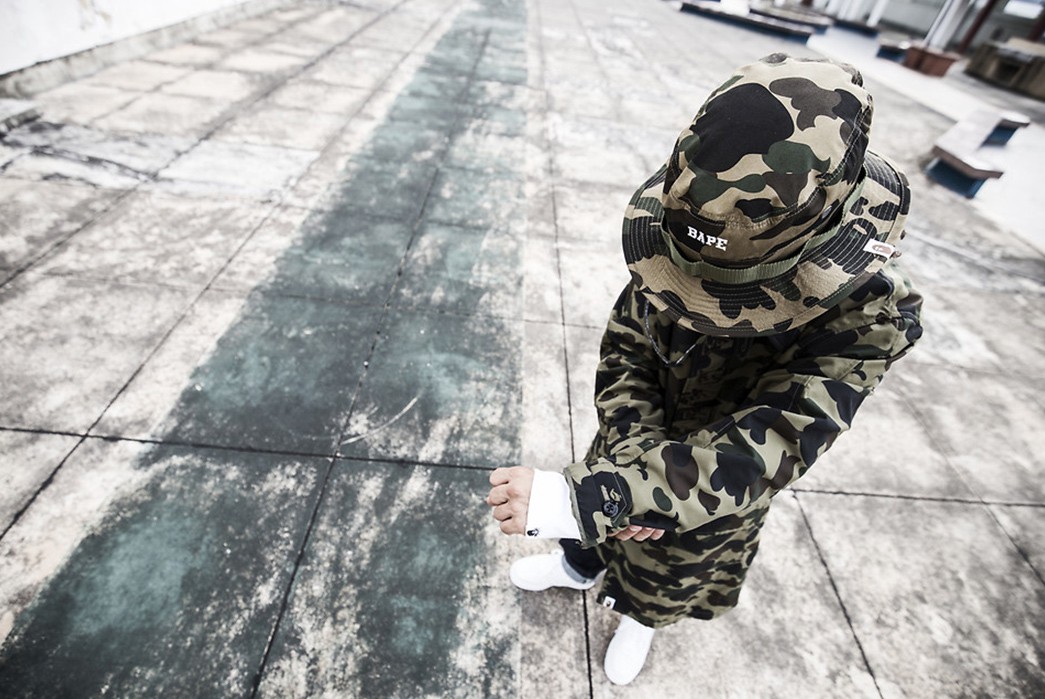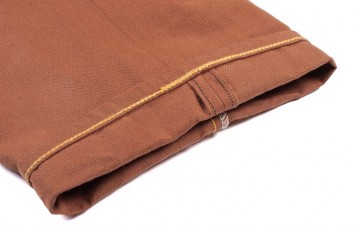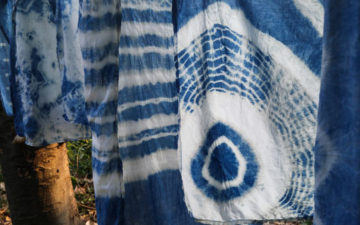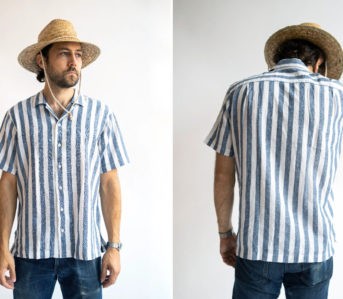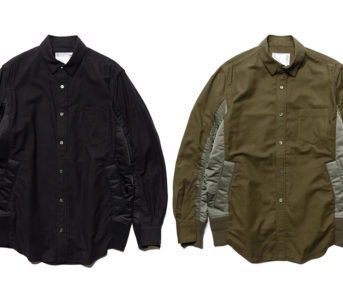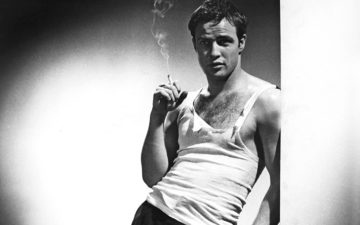Heddels regulars might know we’ve covered camouflage a little bit over the years, but with fall coming up and everyone wanting to hide from the world a little bit more than usual, we thought an in-depth primer on the subject was in order. Blending into your surroundings is no new concept, so read on for a dive into its history and cultural associations.
What is Camouflage?
Camouflage (also known as cryptic coloration) is any combination of color, material, or illumination that helps to conceal the wearer, whether through disguising them as something else or by making them hard to see.
The concept of camouflage has been around for, well… as long as animals have, really. Thousands of years ago, Aristotle noted the color-changing characteristics of an octopus, and later Charles Darwin had plenty to say about it too. There are literally hundreds of examples of creatures going undercover to shield from predators or to become a more effective one themself, and we humans have spent a long time studying those exact techniques in order to copy them for ourselves.
The Evolution of Military Camouflage
The first human uses of camouflage date back centuries, but up until long-range rifles were introduced in the fifteenth century, many western militaries wore brightly colored outfits. Granted, uniform colors during the nineteenth century were also largely dictated by fabric availability, but once they realized that they could be spotted from a mile off wearing red, that quickly shifted to darker tones, like khaki, which blended in better with local surroundings.
By the time World War I broke out, soldiers had a lot more to worry about than just long-range weapons. Developments in the world of camo were vital, and strategists went to great lengths to conceal buildings, vehicles and boats, as well as their own soldiers. Borrowing straight from the zebras in the animal kingdom, armies devised ‘dazzle’ patterns to paint boats with, making it harder to decipher their size and speed. This concept was the source of inspiration for a ball at London’s Chelsea Arts Club in 1915 — one of the first recorded events of camouflage crossing over into fashion.
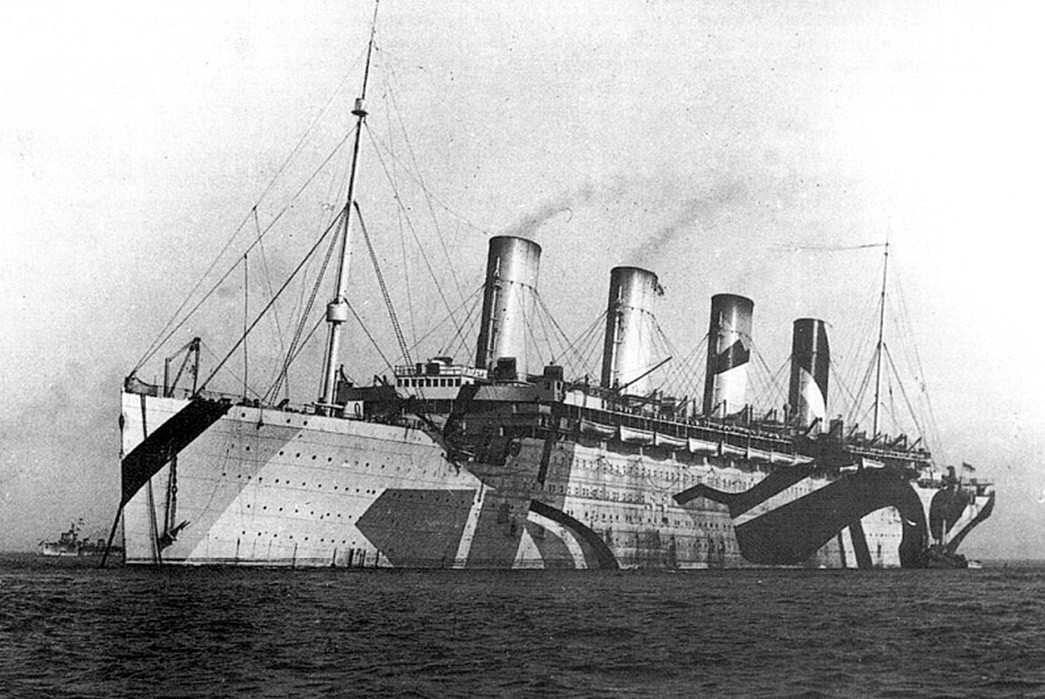
The HMT Olympic painted with dazzle camouflage in WWI. Image via Reddit
A lot of the military advancements around this time were thanks to experiments by naturalist and artist Abbott Thayer (often dubbed the father of camouflage), and his 1909 book Concealing Coloration in the Animal Kingdom became essential reading for generals and strategists. French academics also studied the effectiveness of camo in combat in the 1910s, and from then on it was more widely adopted — just in time for World War II.
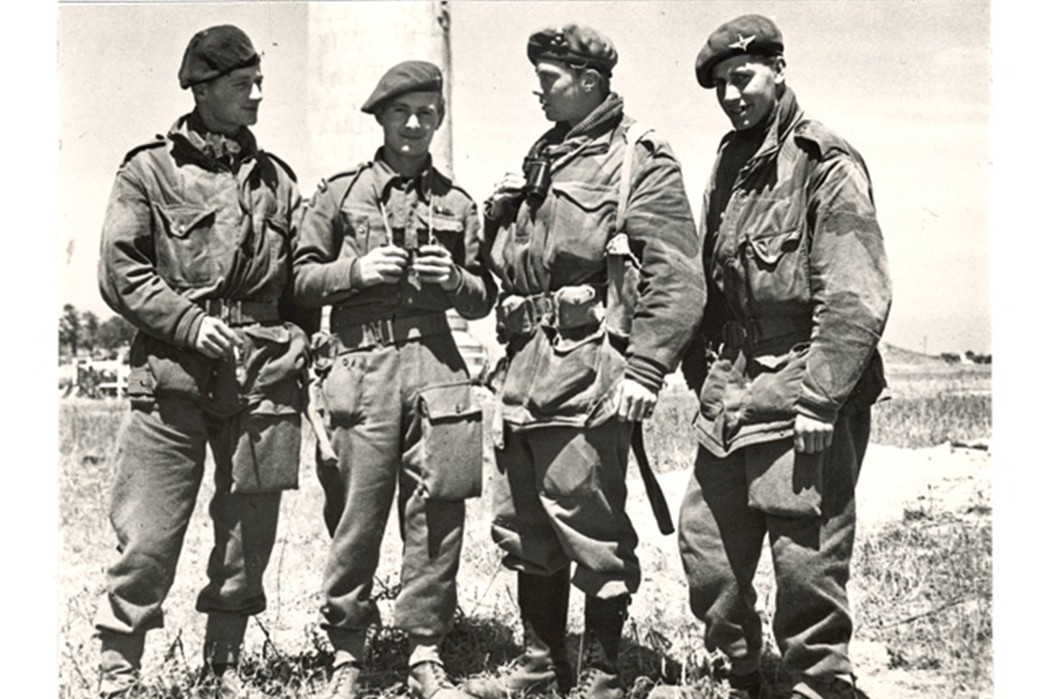
British paratroopers in WWII. Image via parachuteregiment-hsf.org
The Second World War is where camo really came into its own, with militaries racing to develop many varieties of disruptive pattern that would adapt to changing environments. The German army, for instance, issued no less than 10 variations, some of which were designed to be reversible depending on the season and terrain. It doesn’t stop there, lots of these early camo designs provided the inspiration for future styles, such as the 1945 Leibermuster motif, which served as the starting point for the US Army’s ERDL pattern, developed in the late 1940s and used in Vietnam.
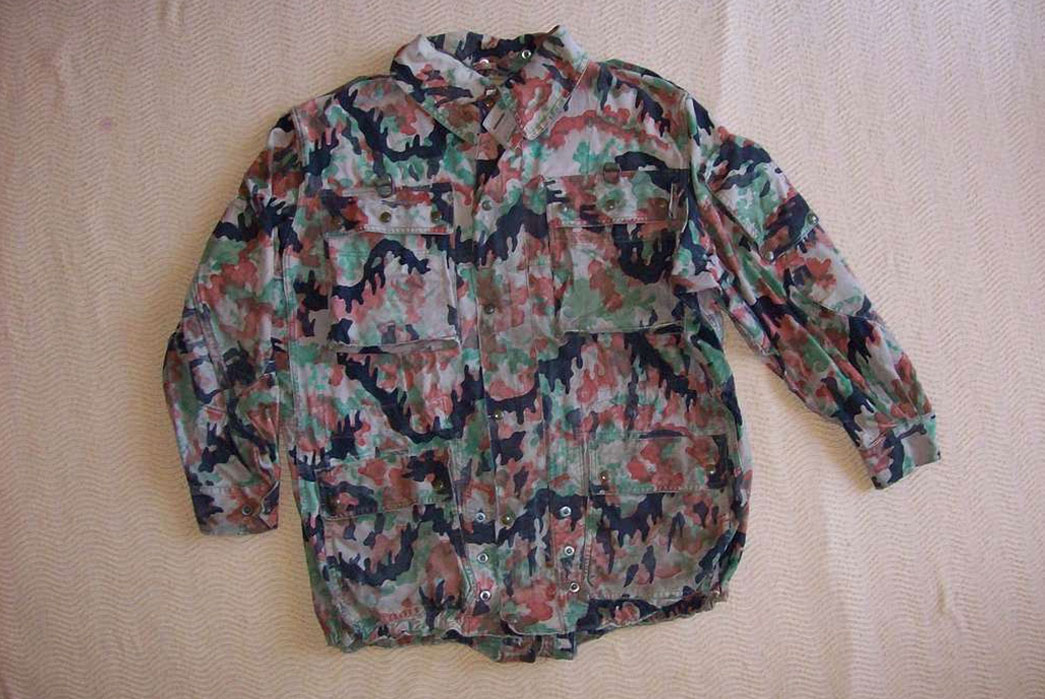
The Leibermuster motif. Image via Vonstuck Camouflage
It was around this time that camouflage officers (or camoufleurs) became much more vital on the battlefield. The term was popularized by the French military in World War I and involved professional artists who were drafted in to develop new patterns. You might recognize a few of the most notable camoufleurs, like expressionist painter Paul Klee and surrealist Roland Penrose.
As the face of conflict has changed, military camouflage has adapted: first to long-range weapons, and more recently to technology and developments such as night vision devices, where textiles are designed to reflect infrared and remain undetected.
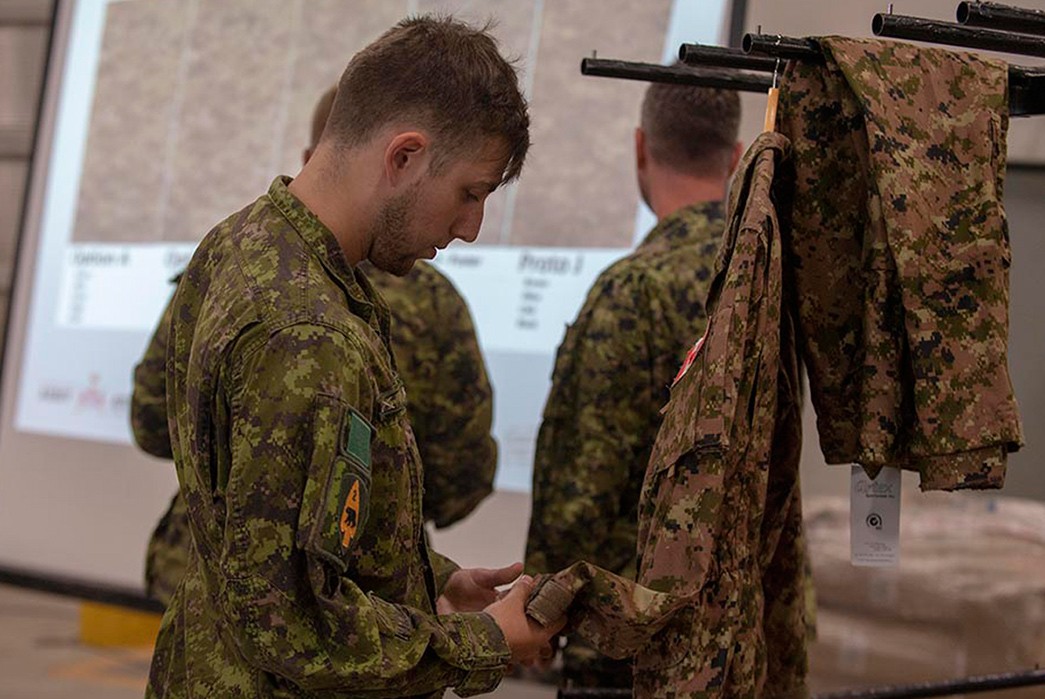
Developed in the late ‘90s, Canada’s CADPAT was the first pixelated camouflage to be issued by a military in 2002. Image via Lookout Newspaper
Digital design has also revolutionized every area of pattern making. It’s worth noting that while the term ‘digital camouflage’ is often used to describe a motif with computer-generated pixelated edges, early versions weren’t designed with software.
These days, digital camo is one of the most common disruptive patterns used by militaries across the globe, since the blocked edges are said to soften the contrast between colors from afar, thus blending in better with surroundings. Now might be a good time to check out our primer on the camo variations you should know, by the way.
From Military Wear to Streetwear
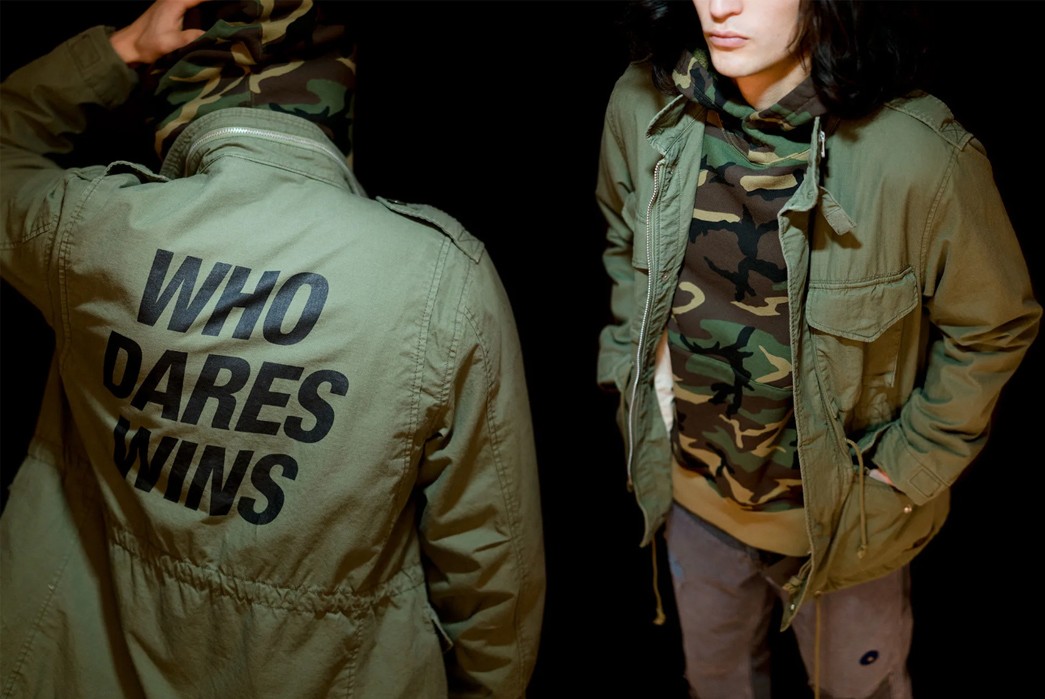
Neighborhood’ SS ‘17 drop, bearing the British special forces motto. Image via Haven Shop
We’ve already touched on the influence that camouflage was beginning to have in fashion in the early twentieth century, but it was the late ‘60s and early ‘70s when it really began to thrive.
Ironically, it was thanks to anti-war protestors, who donned army garb and took to the streets to voice their disdain at American involvement in the Vietnam war. Later, movies like Apocalypse Now and Taxi Driver, whose storylines drew heavily on the war, helped to cement the cool factor of khaki jackets and military uniforms.
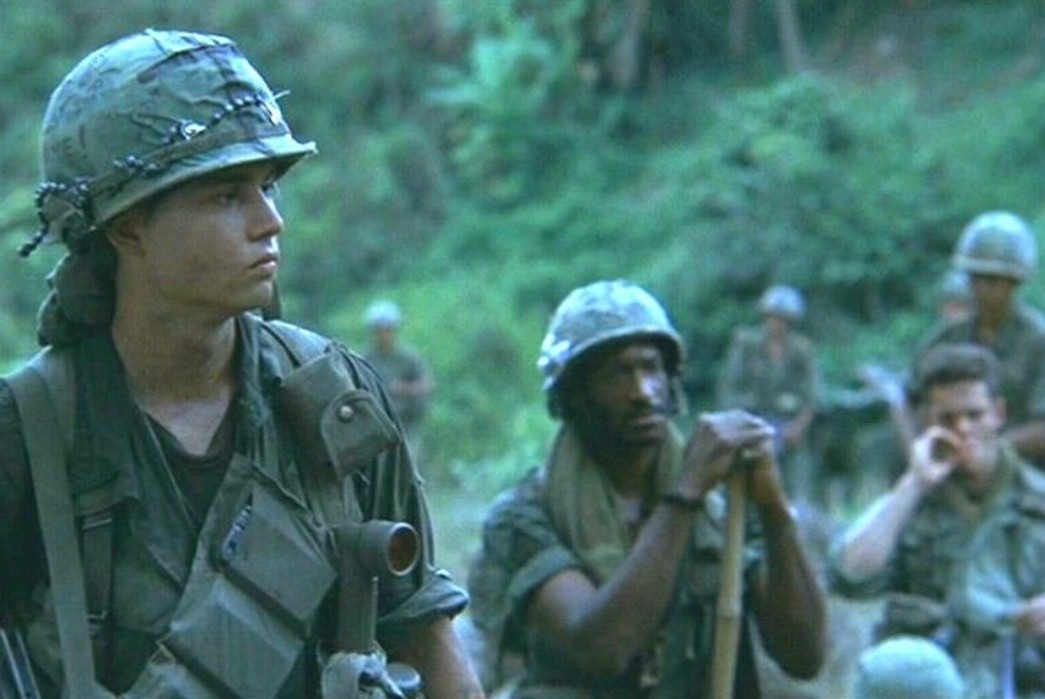
Johnny Depp in Platoon. Image via Pinterest
By the 1990s, designers left, right, and center were incorporating camouflage into their collections, and the style, with its undeniable functionality, became a mainstay in the wardrobes of civilians everywhere. It was this aspect of practicality that first drew the US hip-hop crowd to camo — readily available at army surplus stores and relatively inexpensive, cargo pants and jackets made a sound investment, soon becoming a symbol of the culture.
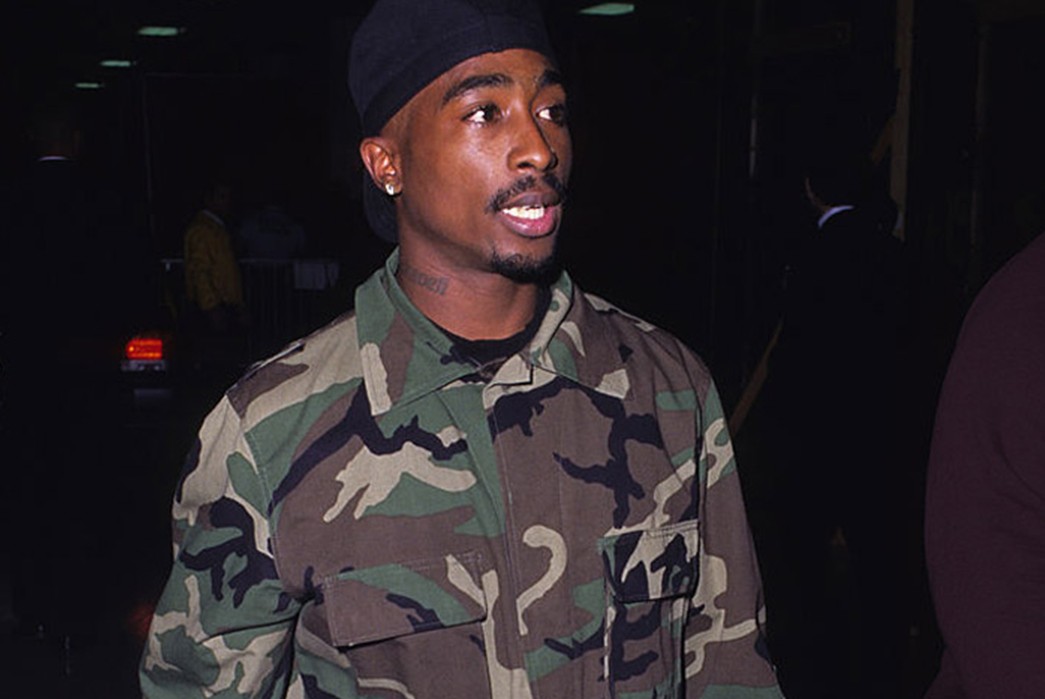
Tupac Shakur wears a camo jacket. Image via Rap Up
Meanwhile, in Japan, American military culture was already well-established thanks to the presence of US soldiers there in the aftermath of World War II, and other American influences, like Ivy League, had already become rooted in the region’s fashion circles.
As you’d expect, reproductions of US military clothing began to emerge and the culture had a profound influence on burgeoning streetwear designers such as A Bathing Ape, Neighborhood and Undercover. As well as using existing patterns, brands who were pioneering the use of camo in streetwear began to develop their own versions, with BAPE’s iconic take on the Duck Hunter pattern earning a cult-like following and Stüssy soon following suit. The former’s links with hip hop also helped to ingrain camo into the genre.
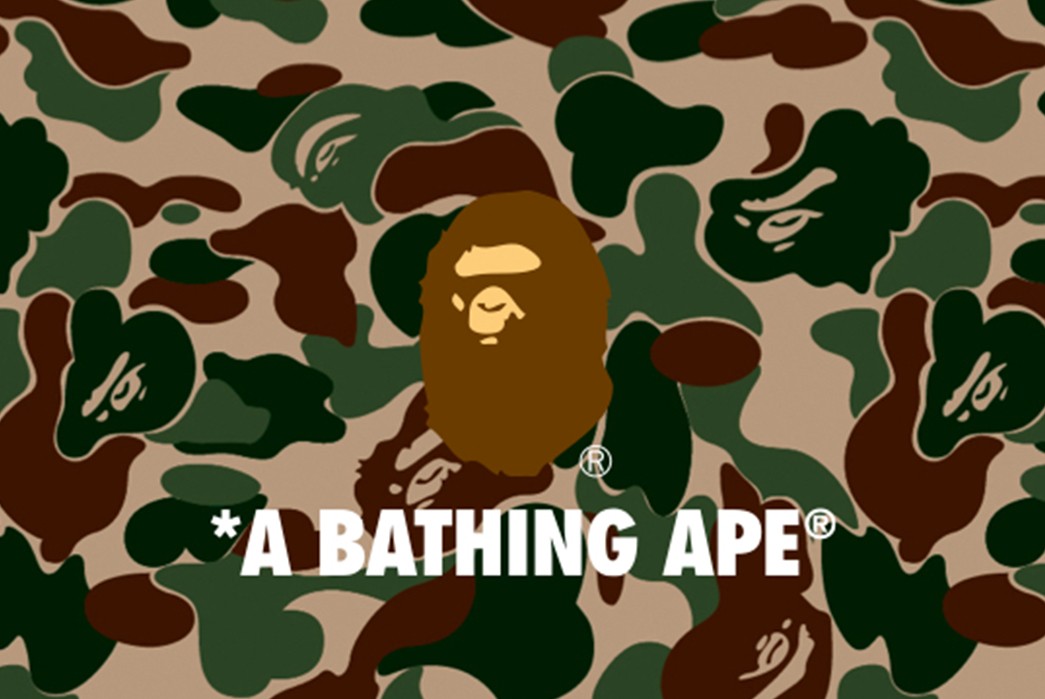
BAPE’s ABC camo. Image via BAPE Online
There are, of course, some designers that have been around long enough to have been involved in producing both military and fashion camouflage. Carhartt had a part in creating US Army uniforms in both world wars, and while its most popular wares these days are unpatterned, those roots in military clothing and workwear helped to establish it as a go-to label for streetwear buffs.
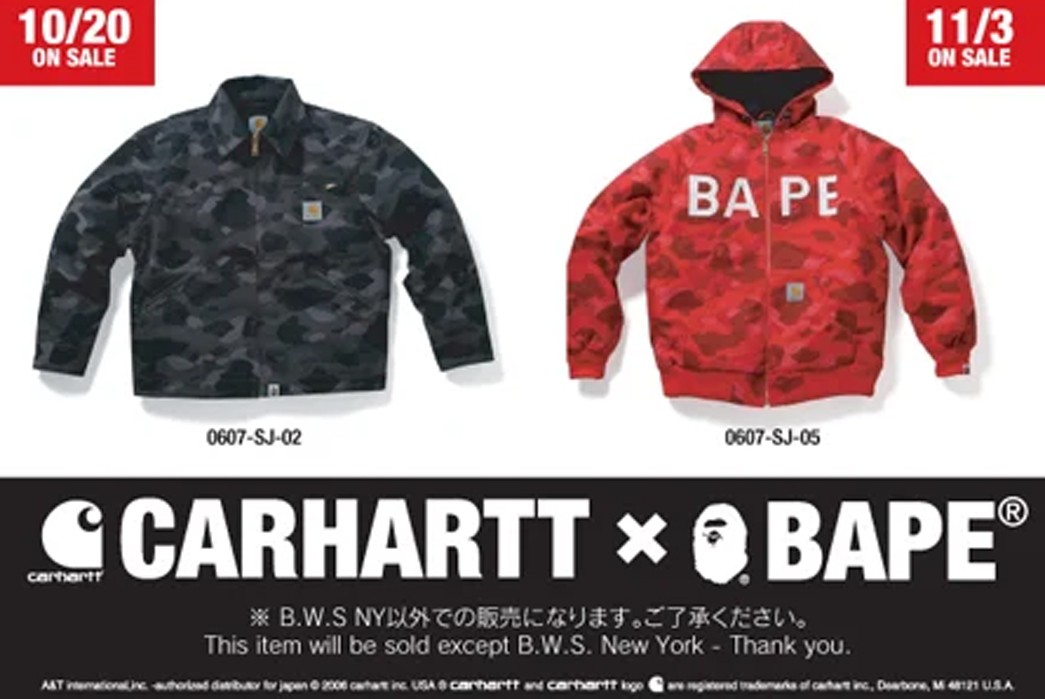
A legendary collab – BAPE and Carhartt WIP’s 2006 capsule. Image via Freshness Mag
Throughout the decades, just about every designer out there has dipped its toe into the world of camo, but, in recent years, some have questioned whether it’s really okay to wear the pattern.
On Wearing Camo Today
Some believe that donning a camouflage jacket could be perceived as appropriation if you’re not involved in the armed forces, but in her 2019 Marie Claire op-ed, author Claire Gibson (whose close relatives are all enlisted), concludes that it can be an act of remembrance rather than stolen valor or the war glorification. The answer to whether it’s appropriate for non-military personnel to wear the style becomes murkier on the subject of its use by police.
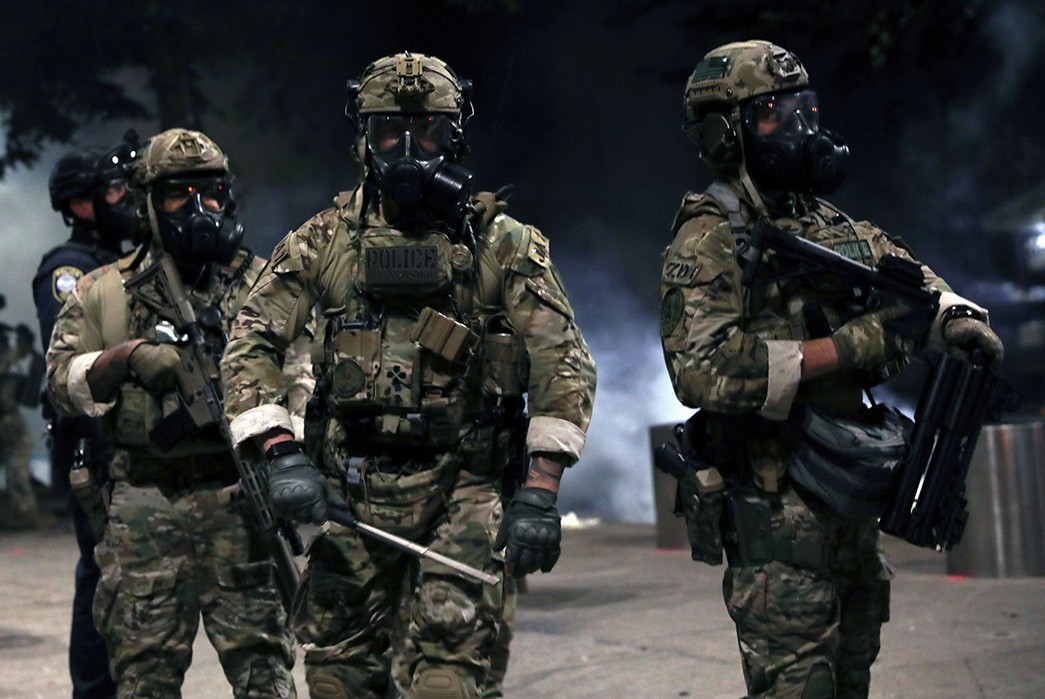
Federal law enforcement officers during a protest in Portland, Oregon in July 2020. Image via The Washington Post
With so many questions surrounding the legitimacy and efficacy of policing right now, particularly in America, militarizing cop uniforms just isn’t the right step forward. No matter how much camouflage infiltrates fashion, its explicit purpose is to conceal yourself from an enemy—the antithesis of the ideal goal of a police officer, to be visible to the people they’re ostensibly supposed to protect. Herein lies the problem when you’re faced with a police officer, tasked with protecting civilians and handling local law and order, dressed in combat clothing.
Not only does it send a message of aggression, but it reinforces a prevailing distrust in state law enforcement by upholding the us-versus-them mentality. Worse, officers (presumed to be police) dressed in camouflage are indistinguishable from the military, causing mass confusion about the actions of said personnel and protesters’ rights.
For all its questionable use by law enforcement officers and the armed forces, camo holds up as an emblem of counterculture movements, particularly hip hop, and the anti-war demonstrators who first rocketed the pattern to the mainstream.
Perhaps the most interesting thing about its use in streetwear is that, while its traditional purpose for the military is concealment, the prints made popular by the likes of BAPE and WTAPS are unabashedly the opposite. They’re almost as conspicuous and plastering a recognizable logo across your chest, and certainly as desirable.

